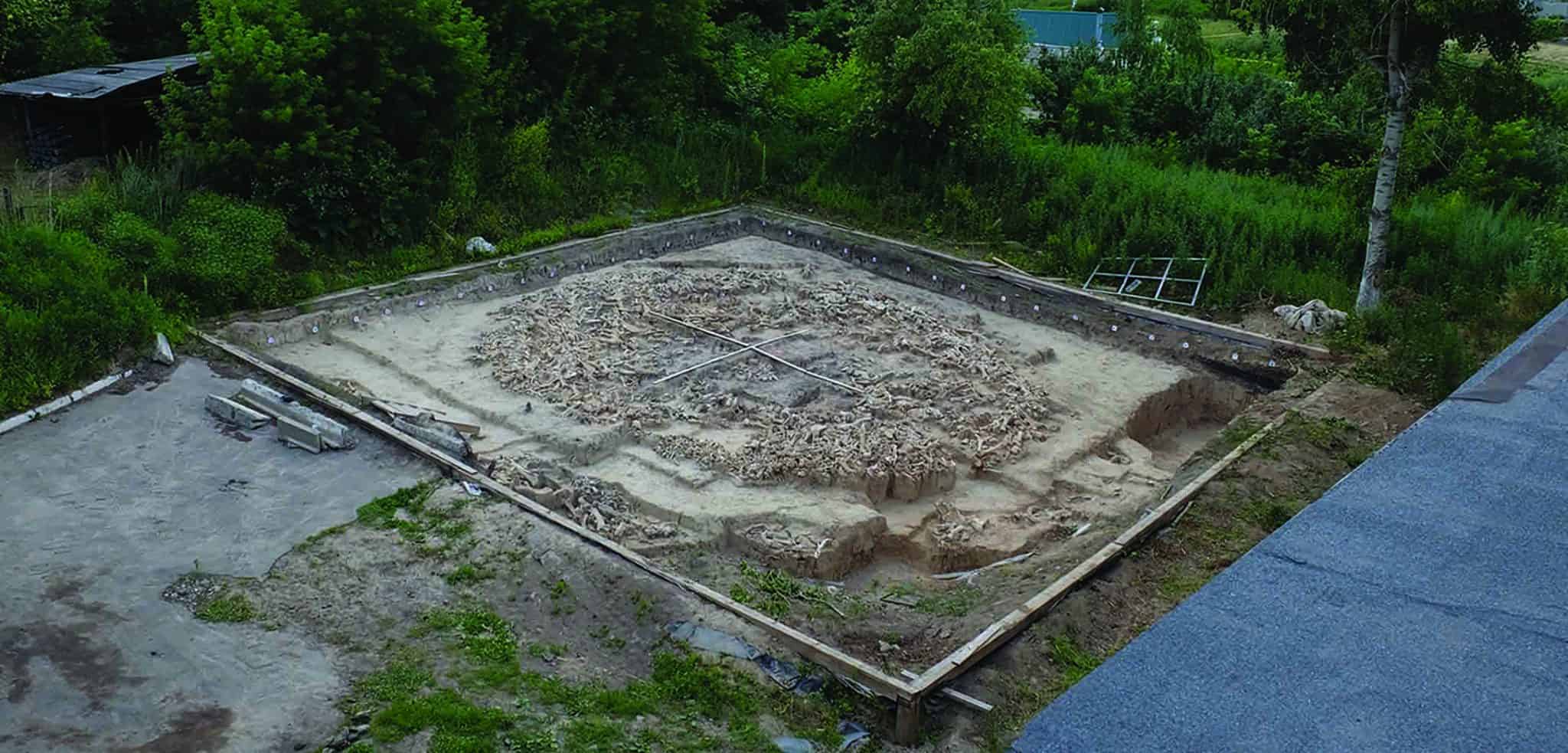

Hidden within the frigid plains of southwestern Russia lies a remarkable structure crafted from the bones and tusks of mammoths, measuring 40 feet in diameter and existing for more than 24,000 years. This ancient site, built by Ice Age hunters, raises questions about its purpose—whether it was a shelter, a ceremonial site, or something entirely different remains uncertain.
Recent DNA research examining 39 bone samples from 30 different mammoths unearthed at the Kostenki 11 site is shedding light on the lifestyles of these ancient peoples and their interaction with the mammoths they hunted.
Bone Circles Uncovered
The Kostenki 11 site, situated near the Don River and approximately 300 kilometers from Moscow, stands as one of Europe’s most critical Upper Paleolithic locations. It features several circular formations constructed from woolly mammoth bones, with some reaching over 40 feet (12 meters) across.
This site is not unique, as over 70 similar structures have been identified across Ukraine and western Russia, sparking speculation among researchers. Were these structures built using freshly hunted mammoths, or were the bones collected from long-deceased carcasses?
To unravel this mystery, an international research team analyzed the bones. Using techniques like radiocarbon dating and ancient DNA analysis, they crafted a narrative about the mammoths and the humans who utilized their remains.
Understanding the Mammoth Legacy
Investigations found that the mammoth bones dated back across several centuries. Some bones were over a thousand years old when repurposed for these circular structures. This discovery indicates that early humans not only hunted mammoths but also scavenged materials from older remains.
Each mammoth bone circle is accompanied by large pits, possibly serving as storage areas or dumping grounds. The site was first uncovered in 2013, and following three years of excavations, researchers employed flotation techniques to recover ancient artifacts and remains from the earth.
According to the analysis led by Dr. Alexander Pryor from the University of Exeter, a total of 51 lower jaws and 64 individual mammoth skulls were integral to the construction of these walls.
Imagine the surreal experience of inhabiting a dwelling built entirely from mammoth bones and skulls.

Besides bones, the researchers discovered traces of charcoal, burnt remains, stone tool fragments, and plant matter, suggesting insights into the diets of these ancient inhabitants. The presence of charcoal implies that fires were lit within these circular structures, providing warmth during the harsh Ice Age evenings. Climate models indicate that conditions were likely severe at the time, with average temperatures plunging to around -20 degrees Celsius or lower.
Interestingly, the bones exhibited no signs of butchery. For such large game, hunters may have taken the majority of the meat, leaving smaller pieces to decay on the bones.
A Focus on Female Mammoths

The study also revealed striking details about the mammoths themselves. Genetic analysis of 30 individuals indicated a significant majority were female, a stark contrast to other mammoth discovery sites where males are more frequently found. This suggests that the mammoths at Kostenki may have descended from herds typically led by matriarchs.
Additonally, the researchers identified seven different mitochondrial lineages among the mammoths, suggesting they did not all originate from the same familial group. This further implies that the bones were gathered over an extended timeframe, rather than being sourced from a single hunting expedition.

By examining the stable isotopes found in the bones, scientists established that there were negligible dietary differences between males and females. In modern elephant species, for example, males and females exhibit differing foraging patterns, with males often traveling greater distances and consuming a wider array of vegetation. The lack of variation in mammoth diets suggests that their social structure and behavior diverged significantly from that of their contemporary relatives.
A Glimpse into the Ice Age
The fact that these bones accumulated over centuries suggests that the circular structures were not a one-time creation but rather the result of ongoing usage. This indicates that the region was suitable for habitation, although perhaps not throughout the entirety of the year. The traditional view of nomadic hunter-gatherer groups consistently seeking new territories for food is being reassessed. While these groups certainly moved, they likely centered their activities around key landmarks that served as bases or ceremonial sites, especially during significant astronomical occurrences like the equinoxes and solstices.
As the icy terrains of Russia continue to reveal their mysteries, the mammoth bones of Kostenki 11 stand as a remarkable testament to the resourcefulness and endurance of our ancient ancestors. In a harsh, frozen world, they discovered methods to thrive and left enduring marks on their landscape for countless generations.
The findings are published in the journal Quaternary Environments and Humans.









